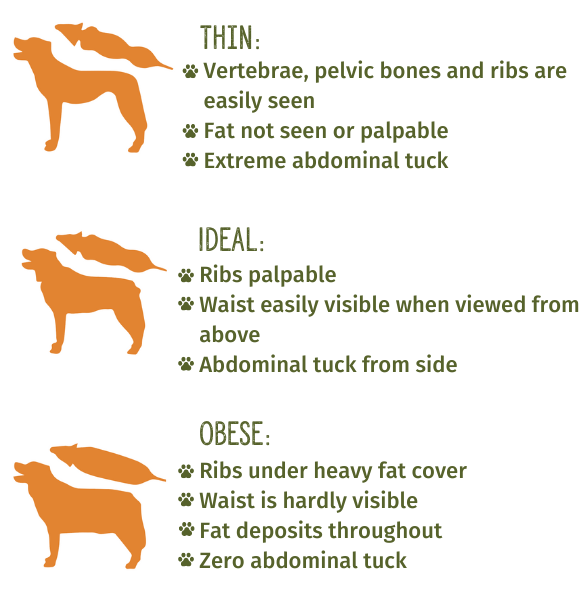The amount of food a pet requires to be properly nourished will vary depending on various factors. A pet’s age, weight, breed, and activity level will impact the number of cups you should be feeding each day. No one knows the pets in your care better than you, so use our feeding charts as a guideline to determine proper feeding amounts while they grow.
TLC Whole Life Puppy Food Puppy Feeding Chart Download
TLC Whole Life Dog Food Puppy Feeding Chart
(All Life Stages) Download
Feeding Tips for Your Pet Parents:
-
Review TLC Pet Food’s Feeding Charts consistently while your puppy is growing. Use these charts as a guideline for how many cups you should feed daily. Puppies and kittens grow fast, so their optimal feeding amount will also change fast.
-
You will start to know your pet and their behavior very well. This will help you gauge how much your puppy should eat. It is important to consider their activity level and exercise routine when feeding. A very active pet may need a little more food than a less active pet of the same age and weight.
-
Most puppies eat just about anything given to them and don’t always know when to stop. Be careful not to feed them just because they are willing to eat it or beg for more!
-
Be aware of the dangers of overfeeding your newest family member. Feeding your pet too much food can lead to; loose stool, vomiting, and hip and joint issues. As well as more severe issues when they get older such as; heart disease, diabetes, and a reduced lifespan.
-
Remember that feeding guidelines are general recommendations, but every pet is different. Examine your pet daily for signs of overfeeding and regularly weigh them at vet check-ups to ensure they are on the right track.
Signs your pet is at a healthy weight:
-
The outline of their ribs can be slightly felt and seen
-
Their belly tucks up when viewed from the side
-
They have a visible waist when viewed from above.
-
Ideal Shape for Adult Dogs:
